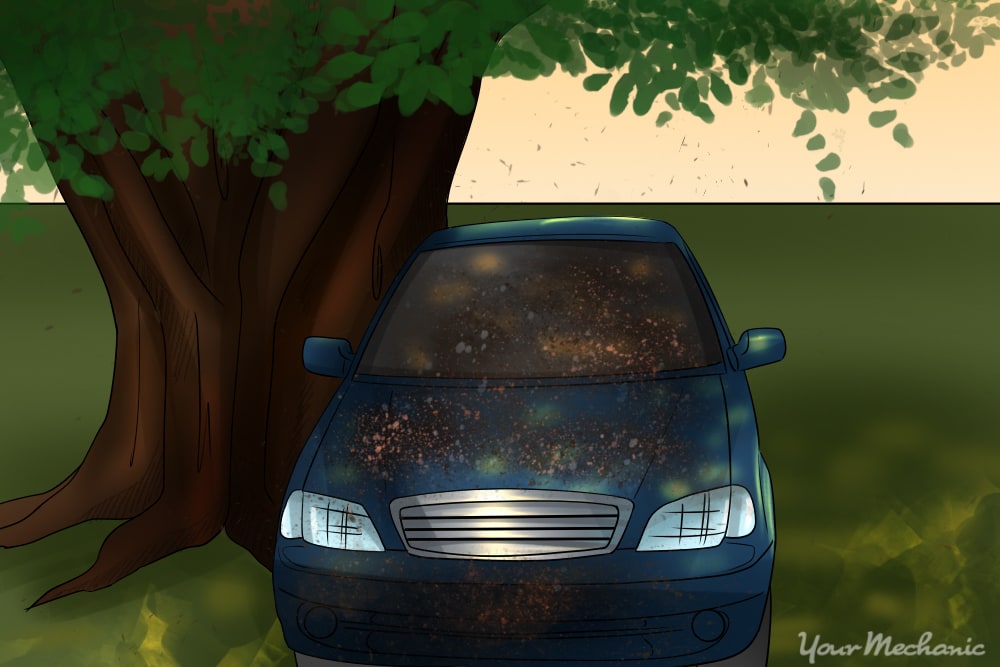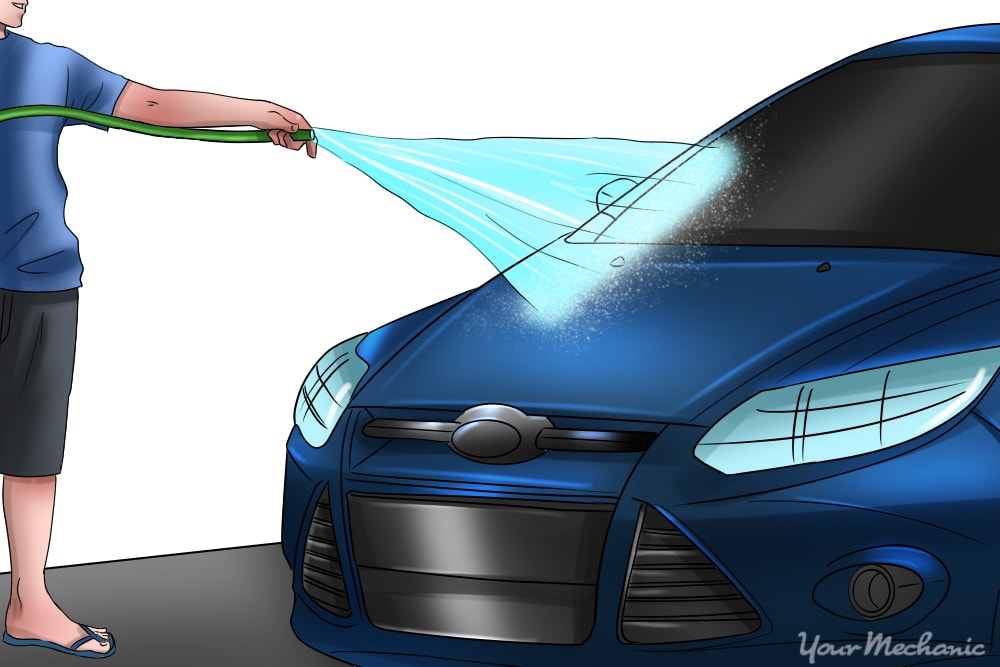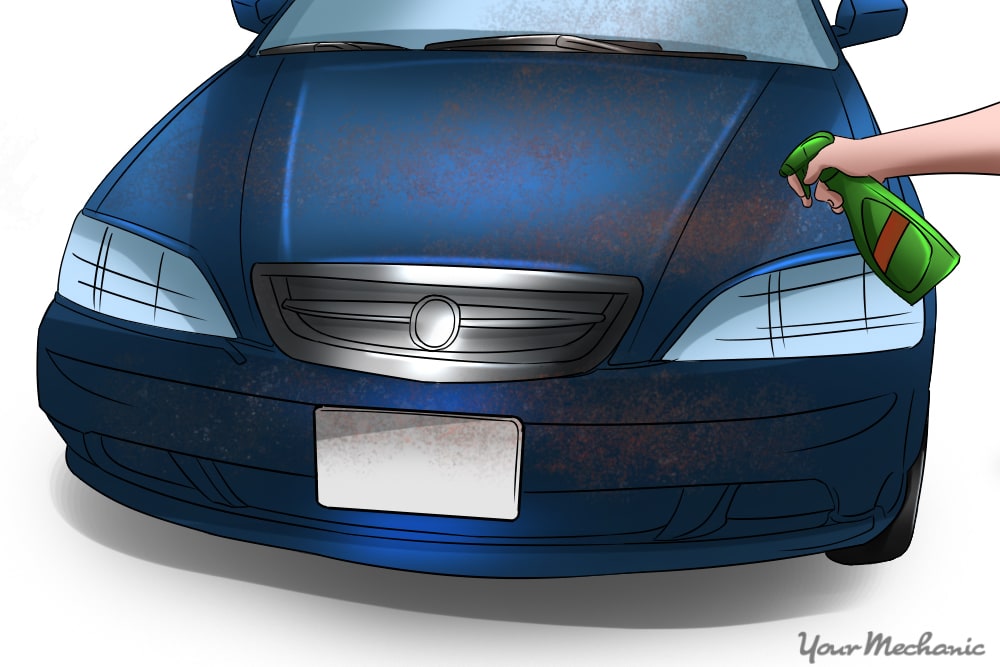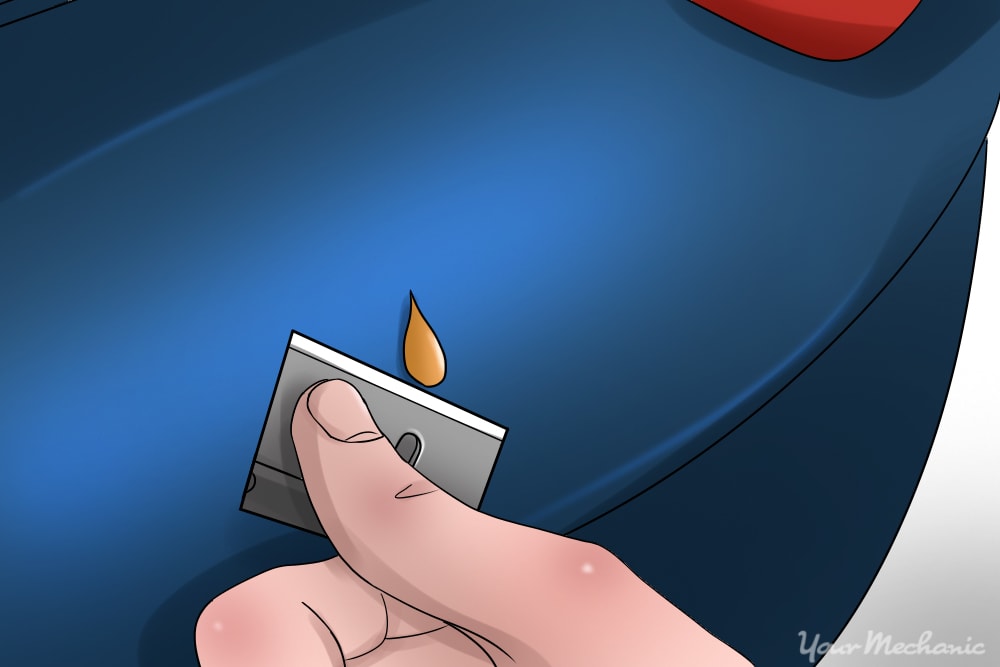

You may not have noticed the tree branch hanging overhead when you parked, but when you returned to your car, its paint was splattered with sap. Regardless of the type of tree sap that made its way onto your vehicle, removing it quickly is important, as the longer it stays on your vehicle the harder it will be to remove and can eventually damage the paint.
While sap will not immediately damage a vehicle’s paint job, time is of the essence. After a while, sap can eat through the clear coat and lead to staining and discoloration of the paint. If the weather is hot, the sap can harden and turn black, making it especially difficult to remove.
Removing sap from a vehicle can be labor intensive and time consuming. It can also lead to scratches in your paint job if not done correctly. In most cases, taking the vehicle through an automated car wash will not do the trick. Luckily, there are a number of methods that can quickly and safely remove the sap.
Method 1 of 3: Hand wash your car immediately
While this method may not work in all situations, it’s a good place to start before attempting more strenuous options. It should be done as soon as possible after the sap hits your vehicle. At the very least, this method will create a clean surface to work if other methods are required.
The car should be washed as soon as possible so the sap does not have a chance to harden. The quicker the sap is attacked the less effort will be required to remove it. When it comes to sap, hot water is best.
Materials Needed
Step 1: Rinse the entire car. All car washes, regardless of sap, start with a full rinse of the vehicle.
Use a pressure washer if you have one, otherwise a regular hose and pressure nozzle should do the trick. Spray the sap as well as all other debris on the vehicle. Give it a thorough rinse.
Step 2: Scrub the car. Break out the elbow grease as well as a clean sponge, wash mitt or microfiber cloth.
Use hot soapy water to clean the entire vehicle. The hotter the better when it comes to the water temperature. Heat will help break down the sap. The sap-covered area should be scrubbed extra hard to help remove the sap.
Step 3: Rinse well. Rinse the soap (and hopefully the sap) off the vehicle. If the sap is still there, scrub it again and then rinse.
Step 4: Wax the car. If the sap is gone, dry the car completely and give it a wax job to ensure the paint and clear coat are protected.
If this method is unsuccessful it’s time to move onto something a bit more involved.
Method 2 of 3: Use commercial products to remove the sap
There are a number of products that are specifically designed to remove contaminants such as sap, tar, and bugs. Head to your local auto parts store to pick one up; in most cases it helps to ask for an expert recommendation at the store. These products are formulated to be hard on the debris while not damaging the paint.
Turtle Wax Bug and Tar Remover and Goof Off are a couple of products that come highly recommended from detailing professionals.
Carefully read the directions and warnings on the bottle and follow the instructions exactly to prevent any unintentional damage to your paint. While the exact method of application will vary by product, these directions should apply to most.
Materials Needed
- Commercial sap remover
- Microfiber cloth
- Soap
- Wax
Step 1: Apply the remover to the sap. Put the remover on a clean rag and then set the cloth over the sap spot. Let it soak in for at least 30 seconds.
Step 2: Rub off the sap. Once the remover has soaked into the sap it should start to loosen.
It’s time to break out the elbow grease. Rub the sap spot in a circular motion until it is all gone. Be careful not to smear the sap across the surface of the vehicle.
Step 3: Use your fingernail. If necessary, use your fingernail to scratch off the remaining sap. Be careful not to scratch the paint.
Step 4: Wash the vehicle. If this method has done the trick, give the vehicle another quick wash and wax. This will remove any remaining sap residue and the wax will help protect the now clean surface of your car.
Method 3 of 3: Using home remedies to remove the sap
If you don’t have access to an auto parts store there are products that most of us have in our homes that can be quite effective when it comes to removing sap on a car. Before applying any of them directly to the sap, it is a good idea to apply it to a hidden spot to make sure it will not damage the vehicle’s paint.
Step 1: Use rubbing alcohol. Apply rubbing alcohol to a cloth and let it soak into the sap. This should start to break down the sap. Rub the sap until it comes off completely. Do not leave rubbing alcohol on the vehicle for too long, as it can potentially damage the paint and clear coat. The spot should be washed with water and soap afterwards to completely remove any traces of alcohol.
Step 2: Use WD-40. This lubricant can be used in conjunction with rubbing alcohol or on its own. Apply WD-40 generously on the sap spot and let it sit for a few minutes. This should start to break down the sap. Rub the sap off and, once it is completely gone, wash the spot with water and soap.
Step 3: Scrape away the sap. Apply alcohol or WD-40 to the sap to help loosen and soften it and then very carefully use a razor blade to scrape off the sap. A steady hand and patience is key. Again, damage to the paint is a possibility with this method.
Step 4: Use Goof Off or Goo Gone. Both of these products are formulated to remove tough stains and gunk. Be sure to test the product on a hidden spot to ensure it will not damage the paint. Apply to a clean rag and let it soak into the sap before starting to rub it. Once the sap is gone, clean the spot with water and soap to remove any remaining product.
Step 5: Use hand sanitizer. Since hand sanitizer is mainly composed of alcohol it should be effective in removing tree sap. Follow the same procedures for rubbing alcohol. Remember, do not let it sit on the spot for too long as it could damage the paint.
Step 6: Use cooking oil. Cooking oil has been known to work on sap, especially if the sap spot is fairly fresh. This product is non-toxic and will not damage the vehicle’s paint. Apply cooking oil directly to the sap and let it sit for a few minutes. Wipe the sap off and clean the spot with soap and water.
Step 7: Use razor blade. This method is only recommended as a last resort, if the other methods have failed. In most cases this would only be used on sap that has sat a long time and is quite hard. Razor blades can also be used to remove tree sap from glass, such as windows. There is a very real possibility of paint damage.
Regardless of which method is used, the vehicle should be washed and waxed after the sap is removed. This will remove any remaining residue of the products used and the wax will help protect the paint and clear coat on the vehicle. If you are not sure which method is best for your situation, or would like to learn more about the process, Ask a Mechanic for quick and detailed advice.







